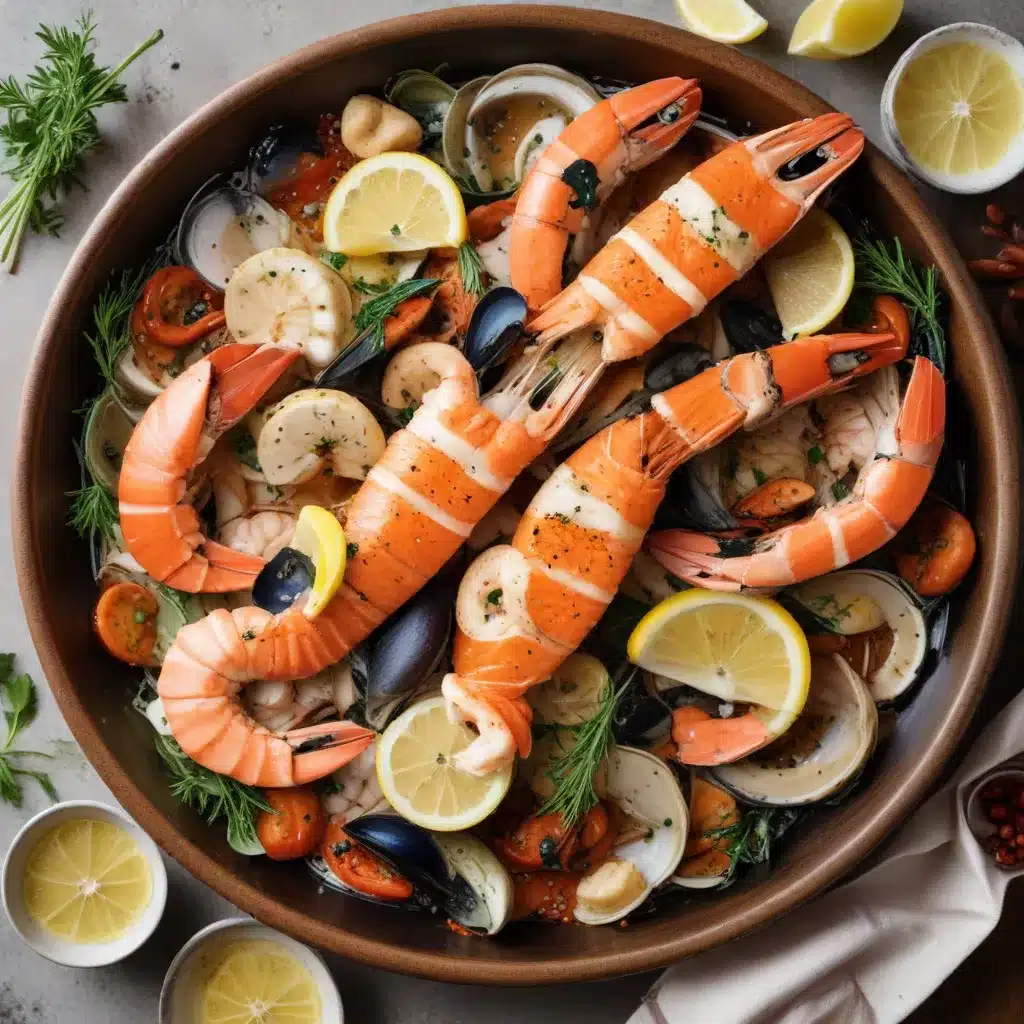
Seafood Culinary Considerations
The secret to crafting unforgettable seafood dishes lies in mastering the delicate interplay between heat and acidity. Whether you’re searing a cod fillet or preparing a zesty ceviche, understanding how to harmonize bold flavors with the natural sweetness of the sea can transform even the simplest recipe into a culinary masterpiece.
Seafood Flavor Profiles
Seafood, with its inherent versatility, serves as a blank canvas for a wide array of flavor profiles. Mild white fish like cod or tilapia provide a delicate base, readily absorbing the bold notes of spices and marinades. In contrast, oily salmon or tuna stand up to more assertive seasonings, their natural richness complementing the heat of chili peppers or the tartness of citrus.
Seafood Cooking Techniques
Mastering the proper cooking techniques is crucial for coaxing out the best in seafood. Quick-searing, sous vide, or en papillote methods help retain moisture and delicate textures, ensuring the protein doesn’t become tough or dried out. Meanwhile, brining or marinating seafood in acidic solutions can tenderize the flesh and infuse it with vibrant flavors.
Seafood Ingredient Balancing
Balancing the flavors in seafood dishes is a delicate dance. The key lies in finding the right equilibrium between heat, acidity, and natural sweetness. Too much spice can overpower the delicate flavors of the seafood, while an excess of acid can make the dish uncomfortably tart. Careful seasoning and ingredient pairing are essential for creating a harmonious and memorable dining experience.
Zest and Spice in Seafood
Citrus zest and spice blends are the dynamic duo that can elevate seafood dishes to new heights. The bright, aromatic notes of lemon, lime, or orange zest can cut through the richness of oily fish, while the heat of chili peppers or cumin can balance the natural sweetness of shellfish.
Citrus Zest Incorporation
Incorporating citrus zest into seafood preparations is a simple yet impactful technique. Grated lemon or lime zest can be rubbed directly onto fish fillets or stirred into marinades, sauces, and salsas. The oils in the zest release their fragrant essence, infusing the dish with a vibrant, refreshing quality.
Spice Blend Composition
Carefully crafted spice blends can also work wonders on seafood. Aromatic spices like cumin, paprika, or chili powder can lend depth and complexity, while the heat of cayenne or chipotle can provide a thrilling counterpoint to the briny flavors of the sea. Experiment with different combinations to discover your signature seafood seasoning.
Balancing Flavors
The key to successful seafood and spice pairings lies in striking the right balance. Start with a light hand when applying citrus zest or spice blends, tasting as you go. The goal is to enhance the natural sweetness and delicate textures of the seafood, not to overwhelm them. Adjust the seasoning accordingly, finding the perfect equilibrium between heat, acidity, and the inherent flavors of the sea.
Acidity in Seafood Dishes
Acidity plays a vital role in seafood dishes, providing a necessary counterpoint to the natural richness and sweetness of the protein. From the tanginess of vinegar and citrus juices to the umami-rich flavors of fermented seafood products, judicious use of acidic elements can transform a good seafood dish into a culinary masterpiece.
Vinegar and Citrus Acids
Vinegar and citrus juices are the workhorses of seafood acidity. White wine vinegar, rice vinegar, or sherry vinegar can add brightness and depth to sauces and marinades, while the tartness of lemon, lime, or orange juice can help balance the natural fattiness of the seafood.
Fermented Seafood Products
Fermented seafood products, such as fish sauce or shrimp paste, can also contribute valuable acidity and umami notes to seafood dishes. These powerhouse ingredients lend a savory complexity that complements the briny flavors of the sea.
Acid-Base Reactions
Understanding the basic principles of acid-base reactions can further enhance seafood dishes. Pairing acidic elements with alkaline ingredients, like baking soda or egg whites, can create unique textural and flavor experiences, such as the tenderness achieved through brining or the lightness of meringue.
Complementary Flavors
Seafood dishes come alive when paired with a harmonious array of complementary flavors. From aromatic herbs and spices to dairy products and vegetable accompaniments, the right flavor combinations can elevate a simple meal into a culinary symphony.
Aromatic Herbs and Spices
Fragrant herbs like cilantro, parsley, or basil can provide a fresh, herbaceous contrast to the richness of seafood, while spices like cumin, paprika, or chili powder can add layers of complexity and heat.
Dairy and Seafood Pairings
The creaminess of crème fraîche, yogurt, or cheese can balance the acidity and spice in seafood dishes, creating a luxurious mouthfeel and soothing the palate.
Vegetable Accompaniments
Crisp, vibrant vegetables like cucumber, radish, or mango can offer a refreshing counterpoint to the seafood, while starchier options like potatoes or rice can serve as a sturdy foundation.
By mastering the art of balancing heat, acidity, and complementary flavors, you can unlock the true potential of seafood dishes. Whether you’re whipping up a zesty cod fillet or a spicy shrimp ceviche, the key lies in understanding the delicate dance between the bold and the delicate. Embrace the power of citrus zest, spice blends, and judicious use of acidity to transform your seafood creations into culinary masterpieces that will delight the senses and transport your diners to the depths of the sea. Visit Fish Tales Cafe to explore more seafood inspiration and culinary adventures.

